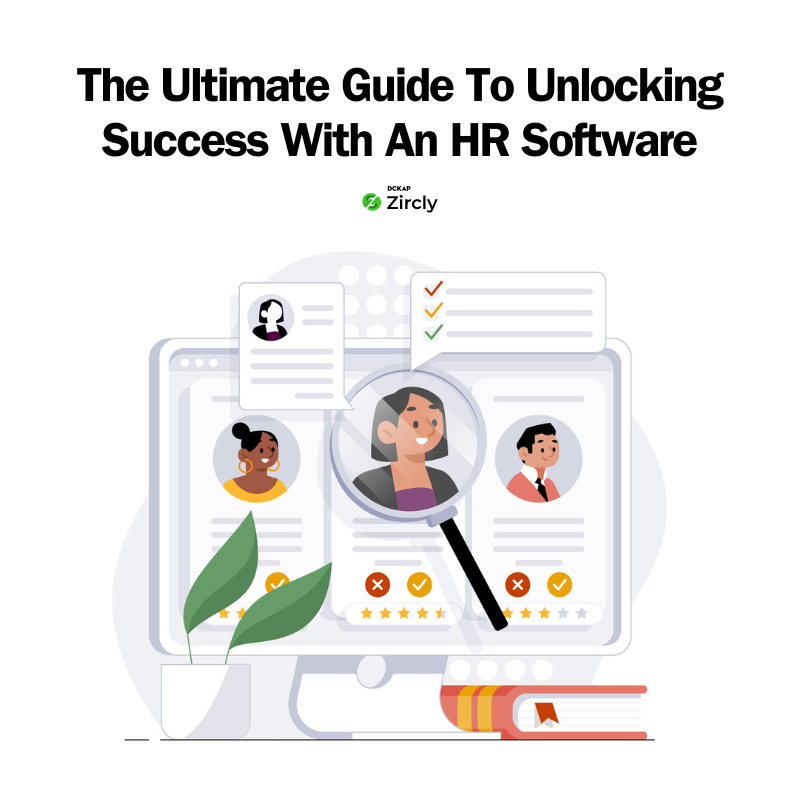With so many different HR Softwares in the market, and each software seemingly as good as the other, it seems almost impossible to pick and choose one software. This guide aims to help you do just that.
By the end of this guide, you will have all the information you need to understand what to look for in a good HR Software and be able to pick one out for your organization.
What is HR Software?
HR softwares are digital solutions that enable organizations to manage and optimize the people management department’s tasks, making it easier to achieve the organization’s goals quickly.
All good HR Softwares either automate or helps automate regular tasks within an organization, freeing up time and energy for the people behind people management.
HR Softwares also help in resource planning and organization regarding people, time, or budgets.
Over time and through proper use, a HR software also collects enough information to provide an overview of the organization. This kind of information can then be used to make important decisions. For instance, during XY months, the Z team may need more employees.
Why use an HR Software?
The main goal of any HR software is to automate the daily tasks of the HR department so they can instead focus on innovation and solving bigger problems.
A cloud-based software, in addition to automation also makes it easy to access it from anywhere, at any time. Location freedom means it makes remote and hybrid work easier for everyone.
Benefits of Implementing HR Software
Increased Efficiency
Implementing HR software significantly enhances an organization’s efficiency. By automating repetitive tasks, HR software frees up valuable time for HR personnel. It takes off tasks that require HR personnel’s attention but not input and gives such tasks a place to exist.
In giving these tasks a place to exist that is not the inbox of HR personnel, HR softwares allow the HR department to stay informed without being bombarded by information all the time.
Enhanced Employee Experience
With a rise in discussion about Employee Experience in the last decade, providing a good employee experience is becoming all the more important to organizations these days.
HR softwares, particularly cloud-based ones improve the employee experience, by allowing employees to use their mobile devices for HR-related tasks. This also fosters better communication between employees and the HR department, ensuring that information flows smoothly and effectively.
Optimized Resources and Cost Savings
HR softwares helps save time and resources, allowing HR professionals to focus more on strategic initiatives, adding greater value to the organization. These softwares optimize resource use and save money by distributing resources efficiently and up to half the time typically spent on administrative tasks.
Improved Decision-Making
HR softwares collect and stores key data related to people management, and uses that data to generate, analyze, and report on key metrics. This data-driven approach supports timely and accurate decision-making, ensuring that the organization remains agile and responsive to change.
Increased Data Security
Finally, HR software increases data security by protecting sensitive information from both physical and cyber threats. This robust security framework ensures that all employee data is safeguarded, providing peace of mind for both the organization and its workforce.
Features to watch out for in an HR Software
When selecting HR software, it’s essential to consider the features that will best meet your organization’s needs. The software with most of the following features is ideal, but each organization has its unique needs and may or may not need some of them.
Here are some features to look out for in an HR Software:
Absence and Leave Management: Centralizes leave requests and streamlines approval processes.
Time Tracking Software: Keeps accurate records of working hours and manages overtime.
Performance Review System: Includes 180º, 270º, and 360º feedback processes to provide comprehensive performance evaluations.
Talent Matrix: Helps balance team performance and fosters skills development.
Recruitment and Selection: Uses an Applicant Tracking System (ATS) to simplify and enhance the recruitment process.
Payroll Solution: Streamlines payroll processes, ensuring accuracy and compliance.
Work Climate and Employee Satisfaction: Measures employee well-being through surveys and eNPS (Employee Net Promoter Score).
HR Reporting and Analysis: Supports decision-making with detailed data analytics.
Workflow Automation: Customizes workflows to save time and reduce manual tasks.
Org Chart: Provides a digital representation of the company structure, making it easier to understand and manage.
Employee Portal: Gives employees access to key information, such as pay slips, benefits, and personal details.
Key Factors When Choosing an HR Software Provider
When choosing an HR software provider, consider the following factors to ensure a successful implementation:
Implementation: Ensure the provider offers support for training and quick adoption of the software.
Support: Look for providers that offer free and ongoing support services to address any issues that arise.
Integration: Verify that the software is compatible with your existing technologies and can integrate seamlessly.
Security: Confirm that the provider has robust data security measures in place and performs regular backups to protect your information.
In conclusion, selecting the right HR software for your organization may seem daunting given the plethora of options available. However, by understanding the essential features and benefits of these digital solutions, you can make an informed decision that aligns with your organization’s unique needs.
Effective HR software will not only streamline administrative tasks but also enhance employee experience, optimize resource use, and improve decision-making through data analytics.
By prioritizing factors such as ease of implementation, support, integration capabilities, and robust security, you can ensure a smooth adoption process and long-term success.
With the guidance provided in this article, you’re now equipped to navigate the HR software landscape and choose a solution that will drive your organization forward.




